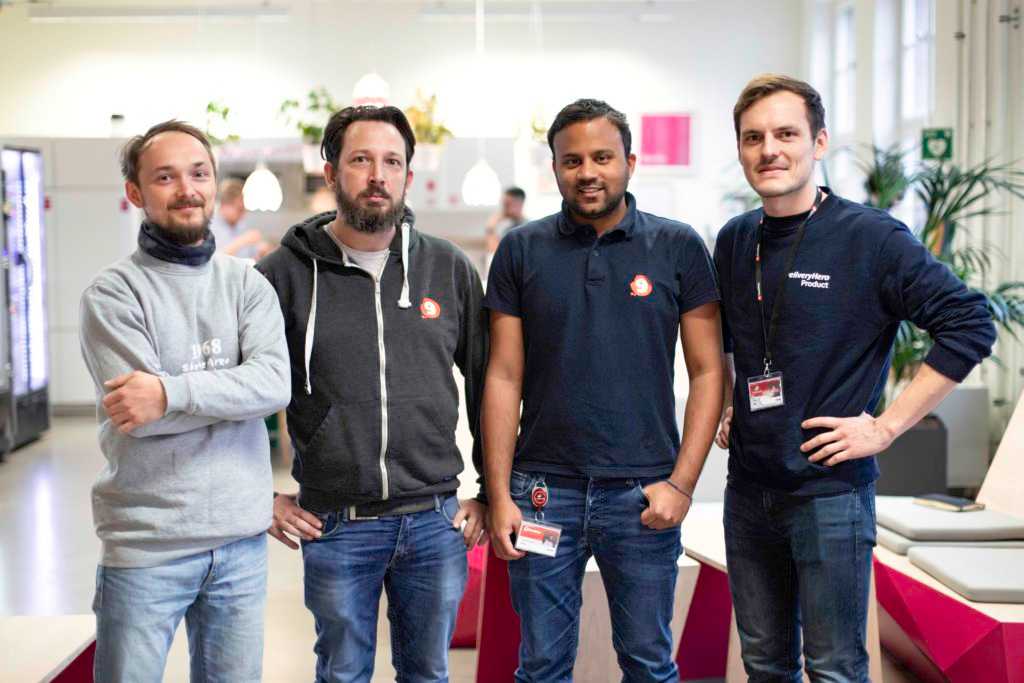Connecting microservices allows companies to be scalable and bring about the flexibility that partners want. We maintain application programming interfaces (APIs) that allow external companies to connect with us, while ensuring that end customers get the same service no matter whether the product is internal or external.Busy times
It’s New Years Eve and people start shuffling home midday from work whether they are in Germany or Hong Kong. People are excited for the festivities to come and the busiest day of home delivery begins.
For restaurants, this is a critical day for their financial books, but peaking order volumes means a strain on restaurant operations. Every day busy chains face challenges between volume and operations. Customers expect their food fast, kitchens must be well utilized and finances must match for the tax authority.
This need is why the Delivery Hero group is one of the first in the sector globally to offer integrations between our core systems and the ones of chains and POS companies. In fast paced establishments like McDonald’s and Burger King, the few seconds it takes for an order to be inputted into automated kitchens can cause critical losses on the utilization rate.
Synergies instead of the monolith
Companies around the world are looking at technology to solve the most difficult of challenges. Indeed we have highly developed methods of order transmission, built upon years of experience and feedback from thousands of clients across the globe. Nonetheless, when we expand our technological ecosystem to join with just as innovative companies, we can share synergies to reach the pinnacle of innovation.
Working together with major global business chains, we have managed to innovate in several sectors to provide the best customer experience. In some, customers are provided with dynamic delivery times based on the chain’s delivery driver locations, in others we ensure customers can order what is in stock thanks to in-house automated inventory systems.
Instead of investing into a monolith infrastructure, we can use API connections to build thousands of microservices that are owned and managed by the partners they were originally built for. Companies can grow their technological ecosystem not just in size, but in innovation by investing into an open API architecture.
Simple and open
With more than 50 integrations globally and thousands of connected branches, scalability becomes an absolute necessity. Due to growing demand for integrations we have been working to make “self-integration” a core focus to growth.
- An open API ensures that pretty much anyone can integrate with us. Therefore we decided to make our API public on developers.deliveryhero.com.
- Our API has existed for years and as we scale, we have taken feedback and experience to make it more robust.
- Decoupling has been a strategy to ensure our API has the fewest requirements possible. Less advanced systems can follow our hybrid model and use our technology onsite with their own.
We use elastic and asynchronous REST-APIs to allow external companies to connect with us. We push orders to chains, while they push their menus or inventory list back to us. As our platforms are connected to our central services, one integration can work seamlessly across the globe.
Often companies expect partners to bend their technical infrastructure for integrations. It is, of course, challenging to integrate with so many different tech stacks and creating rigid standards is a way to achieve a feeling of uniformity. Nonetheless we decided to keep our API flexible to the point where we are saying: “this is what an order looks like on our side and you can take it and do whatever you want with it.”
Consultants rather than developers
The nature of our API allows us to take more of a consulting role in all standard integrations. During the development process we provide assistance in understanding what should be implemented. Instead of working off of generic models, we provide a relevant test shop and update product IDs right from the start. Our team is small but motivated, and guides them throughout the process.
Quality assurance (QA) marks the bulk of the work. Do orders go through? Are menus being updated properly? Were we able to assign a rider? Although not so complicated, different interfaces on the partner side means paying attention to details is critical. Once live, problems can lead to unhappy customers, which isn’t good for any party.
We work to further improve our API, so that we can guide our integration partners into a IoT setup. Some of our partners have already moved past hardware and manual processes, integrating dynamic and automated flows with our core services. Restaurants could provide delivery times per order or they could dynamically provide that based on historical calculations.
Conclusion
Integrations are a key component of what we offer to our partners. With years of experience and several integrations in use globally, we are the forerunners in our business sector. This valuable asset allows us to work together with our partners to optimize and offer our customers a better experience. As a team we have the neat opportunity to work with different technical ecosystems on a daily basis and being able to take food delivery to the future together.
About the author:
Sumit has been working at Delivery Hero for around 4 years and leads the integrations team. His team built integrations across 40 countries and with more than thousands of users.




